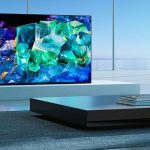Designing for the Future: Integrating AR and VR in Design Tools
- Post
- August 7, 2023
- Design Tools, UI/UX Design, Web Design
- 0 Comments
In the ever-evolving landscape of design, where creativity meets technology, a new dimension is emerging—Augmented Reality (AR) and Virtual Reality (VR) integration. These cutting-edge technologies are reshaping the way designers conceptualize, create, and present their ideas. As design tools continue to advance, the integration of AR and VR opens up exciting possibilities that bridge the gap between imagination and reality. In this article, we delve into the realm of AR and VR integration in design tools, exploring their potential impact and providing insights into how they are revolutionizing the design process.
Understanding AR and VR Integration
AR and VR Defined
Before we delve into the integration of AR and VR in design tools, let’s define these terms. Augmented Reality (AR) overlays digital information onto the real world, enhancing the user’s perception of reality. On the other hand, Virtual Reality (VR) immerses users in a computer-generated environment, simulating a completely different reality. The integration of these technologies in design tools brings a new level of interactivity and engagement to the design process.
The Power of Immersive Design
Immersive design experiences are at the forefront of AR and VR integration. Designers can now create prototypes and visualizations that users can interact with in real-time. This immersive approach enables designers to gain valuable insights into user behavior and preferences, leading to more informed design decisions. By immersing themselves in the virtual environment, designers can anticipate user needs and iterate designs more effectively.
Advantages of AR and VR Integration in Design Tools
Enhancing Collaboration and Communication
Design projects often involve multiple stakeholders, including designers, clients, and developers. AR and VR integration offers a common ground where these stakeholders can visualize and interact with design concepts. Design reviews become more engaging and collaborative, as stakeholders can explore 3D models and make real-time annotations. This level of interaction enhances communication, leading to a shared understanding of the design vision.
Realistic Prototyping and Testing
Traditional design processes often rely on 2D sketches and flat prototypes. With AR and VR integration, designers can create and test 3D prototypes that closely mimic real-world interactions. This realism allows designers to identify potential flaws and optimize designs before production, saving both time and resources. For example, automotive designers can simulate the driving experience in VR, leading to more ergonomic and user-centered designs.
Empowering User-Centered Design
AR and VR integration empower designers to adopt a user-centered design approach. By experiencing designs from the user’s perspective, designers can identify pain points, usability issues, and opportunities for improvement. This user-centric approach leads to designs that cater to the actual needs and preferences of the target audience.
Implementing AR and VR in Design Tools
Intuitive Design Environments
Design tools are evolving to incorporate intuitive AR and VR features. These features allow designers to seamlessly transition between 2D and 3D modes, enabling a holistic design experience. With the use of hand gestures and controllers, designers can manipulate objects and view them from various angles, fostering creativity and innovation.
Real-Time Collaboration
Collaboration is at the heart of design projects, and AR and VR integration take it to the next level. Designers can now collaborate in real-time, regardless of geographical barriers. Virtual design sessions enable team members to work on the same project simultaneously, offering instant feedback and fostering a sense of camaraderie.
Cross-Platform Compatibility
To maximize the impact of AR and VR integration, design tools are becoming cross-platform compatible. This ensures that designers can create, view, and edit designs across various devices, from desktops to VR headsets and even mobile devices. This flexibility not only streamlines the design process but also allows for broader accessibility.
Future Outlook and Possibilities
As technology continues to advance, the future of AR and VR integration in design tools holds exciting possibilities. Imagine architects walking through virtual buildings before construction begins or interior designers visualizing room layouts with a simple gesture. The integration of AI algorithms can further enhance design predictions and optimize user experiences.
Final Words
In the realm of design, AR and VR integration is a game-changer. These technologies are redefining how designers interact with their creations and how users experience design. From immersive prototypes to enhanced collaboration, AR and VR are shaping the future of design tools. As these technologies continue to mature, we can expect a paradigm shift in the way we design, create, and innovate.
Commonly Asked Questions
Q1: How do AR and VR benefit the design process?
AR and VR integration enhance the design process by providing immersive experiences, realistic prototyping, and user-centered design insights. Designers can gain valuable feedback, test designs in real-world scenarios, and create user-centered solutions.
Q2: Are AR and VR integration limited to specific design fields?
No, AR and VR integration can be applied across various design fields, from architecture and industrial design to fashion and gaming. Any field that requires visualization and interaction can benefit from these technologies.
Q3: How does AR and VR integration affect collaboration among design teams?
AR and VR integration foster real-time collaboration among design teams, allowing members to work together regardless of their physical location. Virtual design sessions enable instant feedback, leading to more efficient and effective collaboration.
Q4: Are there design tools available that already offer AR and VR integration?
Yes, many design tools are incorporating AR and VR features. Some popular examples include Gravity Sketch, Tilt Brush, and SketchUp Viewer. These tools empower designers to create and interact with designs in immersive environments.
Q5: What role does cross-platform compatibility play in AR and VR integration?
Cross-platform compatibility ensures that designs can be accessed and edited across various devices, from desktop computers to VR headsets and mobile devices. This flexibility streamlines the design process and increases accessibility.




